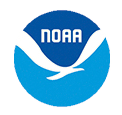Refugio Beach Oil Spill
Oil Spill | Santa Barbara County, California | May 2015
What Happened?
On May 19, 2015, a pipeline owned and operated by Plains All American Pipeline ruptured near Refugio State Beach.
Over 100,000 gallons of crude oil were spilled, much of which ran down a storm drain and into a ravine under the freeway, entering the ocean.
What Were the Impacts?
Field teams documented dead fish, invertebrates, birds and marine mammals in the oiled areas following the spill. NOAA and its state and federal natural resource co-trustees are investigating the extent to which the incident may have caused harm to fish and wildlife.
Species impacted include birds (brown pelicans, common murres, Pacific loons, snowy plovers), marine mammals (including California sea lions and dolphins), fish (especially surf perch and grunion), and marine invertebrates and their habitats.
The spill also shut down fisheries, closed multiple beaches, and impacted recreational uses such as camping, non-commercial fishing, and beach visits. The Trustees held a public meeting on January 20, 2016, to begin soliciting ideas for restoration projects that would compensate for the environmental injuries.
What's Happening Now?
2020 Settlement
On March 13, 2020 the Department of Justice announced a proposed consent decree proposing a $22.3 million settlement to restore natural resources injured by the Refugio Beach oil spill. The settlement was finalized in October 2020 and will go toward resolving natural resource damage claims, to restore habitats and wildlife injured by oil, and to compensate the public for lost recreational opportunities.
2020-2021 Damage Assessment and Restoration Plan
In April 2020 the trustees released a Draft Damage Assessment and Restoration Plan for public comment proposing $22 million from the settlement to be used to restore the wildlife and habitats, and to compensate the public for the impacts to recreation. The trustees also held two public meetings to gather input from stakeholders on the draft assessment and plan.
After considering public comments received, on June 2021, the trustees released a Final Damage Assessment and Restoration Plan. The plan includes:
-
$6.1 million to restore subtidal and fish habitats
-
$5.5 million to restore shoreline habitats
-
$2.3 million to restore marine mammals
-
$2.2 million to restore birds
-
$3.9 million to restore recreation opportunities impact by the spill
-
$2 million for additional planning, project implementation and oversight
NOAA is expected to lead subtidal and fish, and marine mammal restoration projects.
-
The subtidal work will focus on restoring red abalone populations in local Marine Protected Areas, eelgrass beds in Refugio Cove and the surrounding area, and sand-dwelling kelp offshore of Goleta Beach.
-
Marine mammal restoration will include; enhancing existing seal and sea lion stranding response and rehabilitation efforts in Santa Barbara and Ventura Counties, and increasing capacity of existing dolphin and whale entanglement response programs in the Santa Barbara Channel.
Read about abalone restoration work currently underway.
"We are pleased to join this agreement with industry and our co-trustees to help restore vital habitats, wildlife and recreational areas injured by this oil spill. Local communities and economies depend on these ecosystems, and we look forward to working with the public on projects to restore them to health.”
Nicole LeBouef, acting director of NOAA's National Ocean Service.







